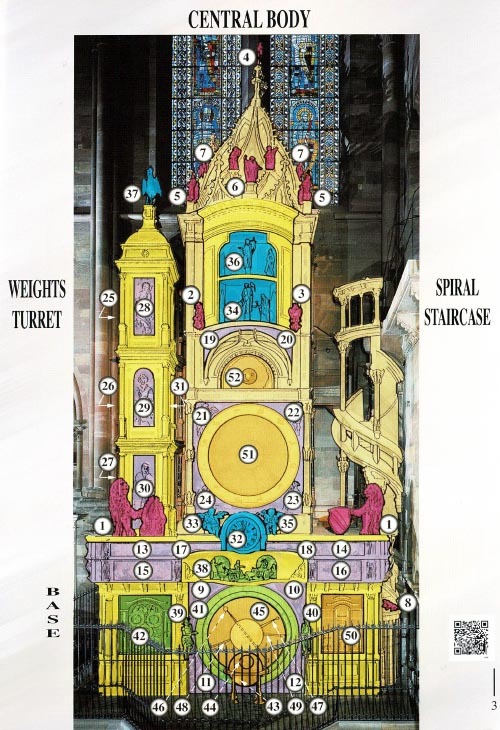Media: BOOK - paperback 32 pages
Author: R. Lehni
Year: 2011
Other: Illustrated in full colour gtroughout
STRASBOURG CATHEDRAL’S ASTRONOMICAL CLOCK
There is a legend which claims that when the astronomical clock’s maker had completed his creation, the town Magistrate, in order to ensure that he could not construct a similar masterpiece elsewhere, gave orders for his eyes to be put out. There is of course not the slightest element of truth in this fable, but it reveals the justifiable pride the inhabitants of Strasbourg felt in possessing a work which was considered to be one of the seven wonders of Germany.
Its world-wide fame throughout the centuries does not seem to have diminished, judging by the crowds that continue to throng before it. Oddly enough, they always seem attracted at first by the movements of the automata, whereas the clock is above all an extremely rich monument to art and science; it is also a memorial of enduring significance to history. This guide-book is an attempt to clarify briefly these occasionally complex aspects. The outline on the opening page, whose numbers are utilized in the text, should help to simplify the understanding of certain points.
HISTORY (first paragraphs)
I - The clock of the three kings
For a long period, the Middle Ages seem to have been quite indifferent to time. Such instruments as they had: clepsydra (water-clocks), hour glasses or sundials, measured fragments of time but were unable to account for its continuity. Then a technical revolution took place towards the end of the 13th Century with the invention of the mechanical clock which replaced the uncertain clerical time by a time that was secular and rationalized. In order to reinforce their prestige, towns installed on one of their public or religious buildings a monumental clock containing various improvements which gave them a spectacular appearance. Strasbourg was among the first to set an example by ordering the construction of the clock of the Three Kings, which took place between 1352 and 1354.
The instrument’s case, some twelve metres in height, stood against the west wall of the southern arm of the transept, where a few brackets and fastenings retain traces of its emplacement. From bottom to top, the structure was composed of: a calendar, an astrolabe and a statue of the Virgin and Child before which, every hour, the Magi came to bow, while chimes played various melodies and a cock crowed and flapped its wings. This automaton, the oldest to have been saved, is now on exhibit at Strasbourg’s Museum of decorative arts.
A reviewer's comment
This Clock should be one of the Seven Wonders! The book helps you understand the complexity of it.

Related Products

 AUD
AUD
 USD
USD
 NZD
NZD
 GBP
GBP
 Euro
Euro







